

|
|
|
Jean-Christophe Nebel
|
|
 |
V-Man: Creation of the Virtual Man
Position: Principal Investigator
Funding: EU (Framework 5)
Duration: 2001-2004
|
| Project description |
The V-Man project aims to develop an intuitive authoring system allowing any kind of user, without any particular computer skill, to create, animate, control and interact with a new generation of 3D virtual characters: the V-Men.
The 3D-MATIC Research Laboratory is in charge of the creation of the virtual humans. The aim is to produce automatically 3D models of scanned people, which can be animated directly by commercial animation packages. The created virtual humans have to be indistinguishable from real humans and they should also be recognisable individuals. The models have to be segmented automatically (clothes and limbs). Moreover skin and soft tissue properties should be made available in order to ensure a realistic animation. These can be divided in 3 tasks:
| Research |
Jump to:
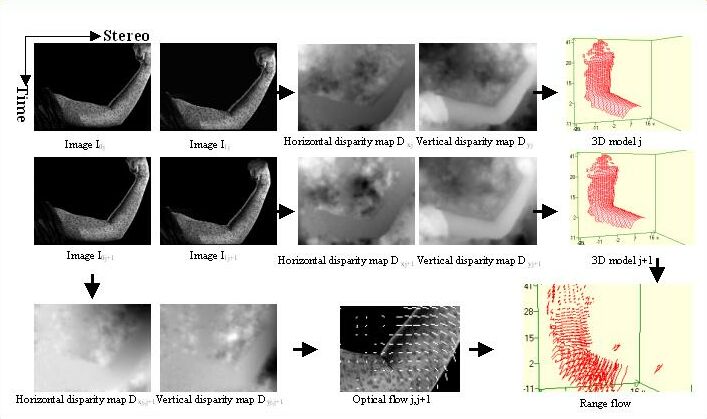
For more information, go to Publications
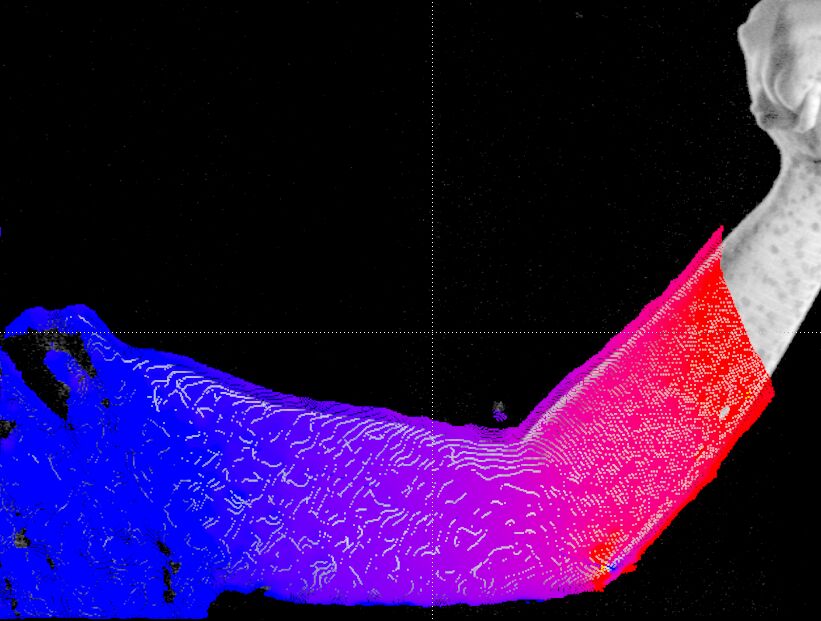
(Blue: weight1=1, weight2=0 / Red: weight1=0, weight2 =1)
For more information, go to Publications
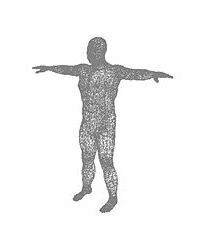
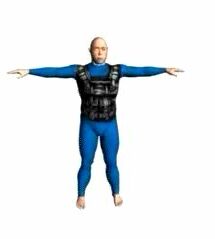
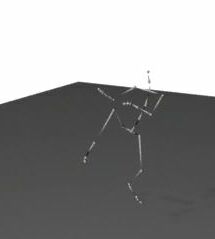
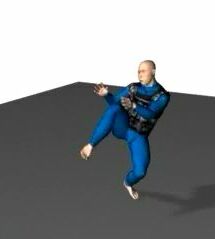
Download videos showing animation of our characters using the V-Man system:
For more information, go to Publications
The generation and extraction of 3D clothes models, which is not possible with current state-of-the-art systems, is done by capturing a same individual in a specific position with and without clothing. A subtraction algorithm processes both scans, whose positions is adjusted using landmarks, to generate the 3D clothes models.
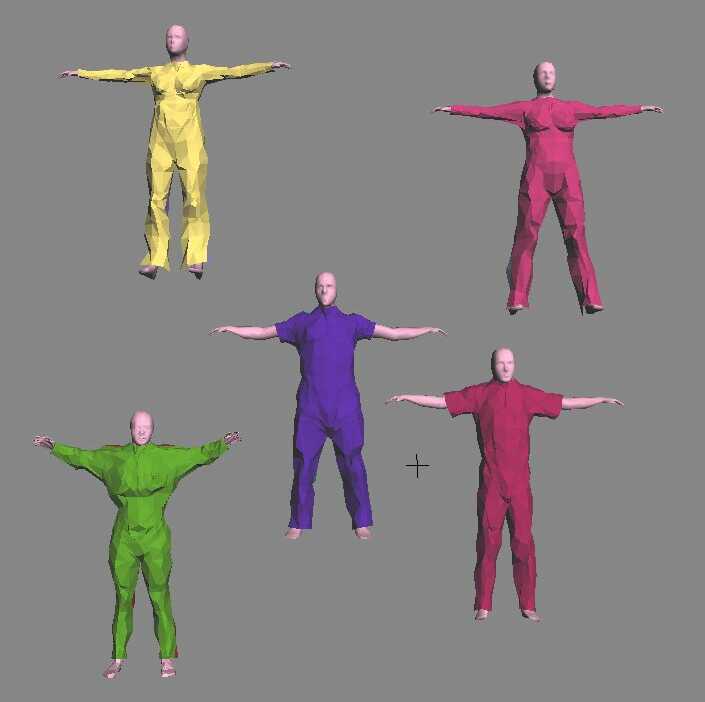
Characters wearing 3D garments
The process of texture generation is the following: using the given flatten mesh of a generic mesh and using a set of photographs which sre used as texture maps, the user sets a set of landmarks on the photographs corresponding to predefined landmarks on the flatten mesh. Then a warping procedure is operated so that the warped photographs can be mapped automatically on the generic mesh.
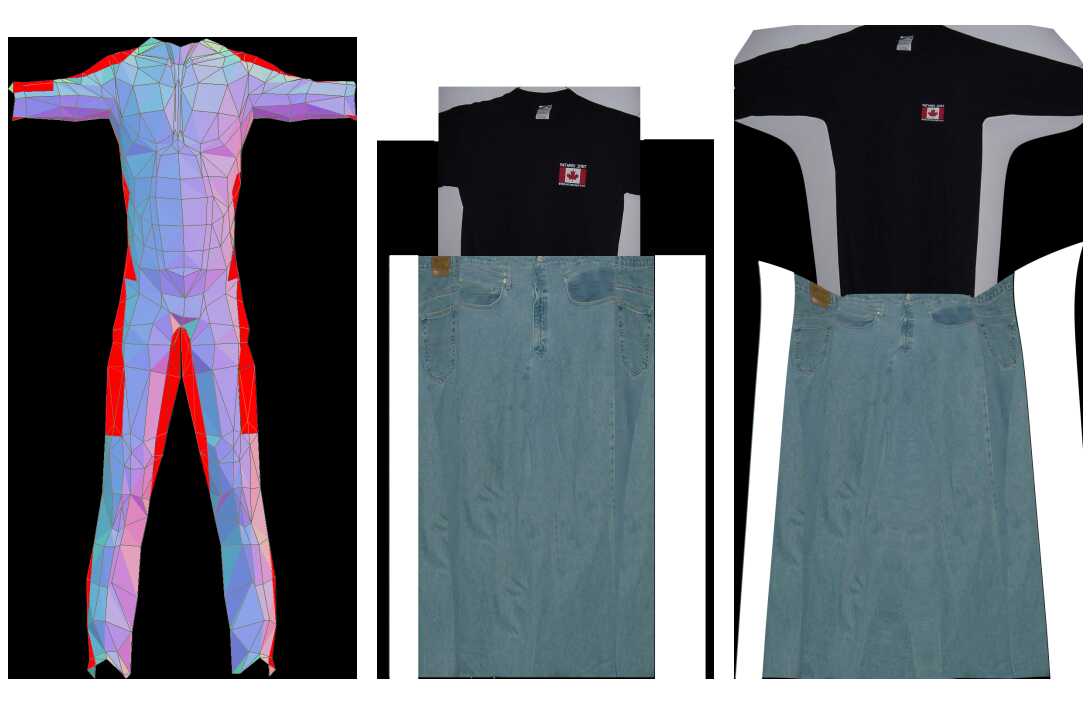
Texture warping
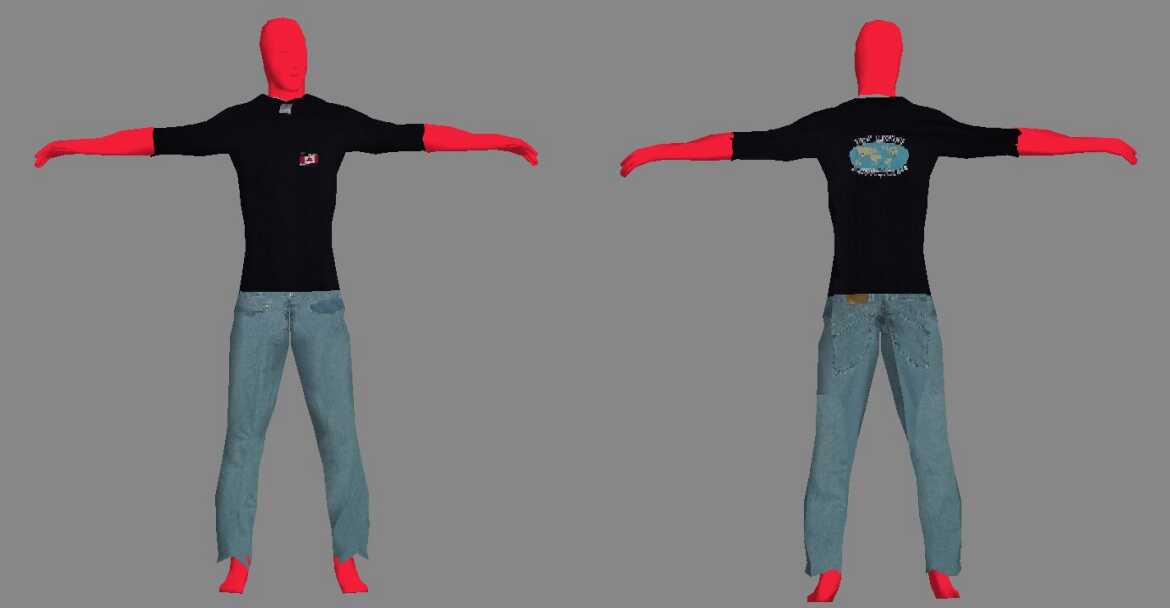
Character wearing textured 3D garment
For more information, go to Publications
| Keywords |
computer graphics, computer vision, simulation, skinning, 3D scanners, virtual actors
| Publications |